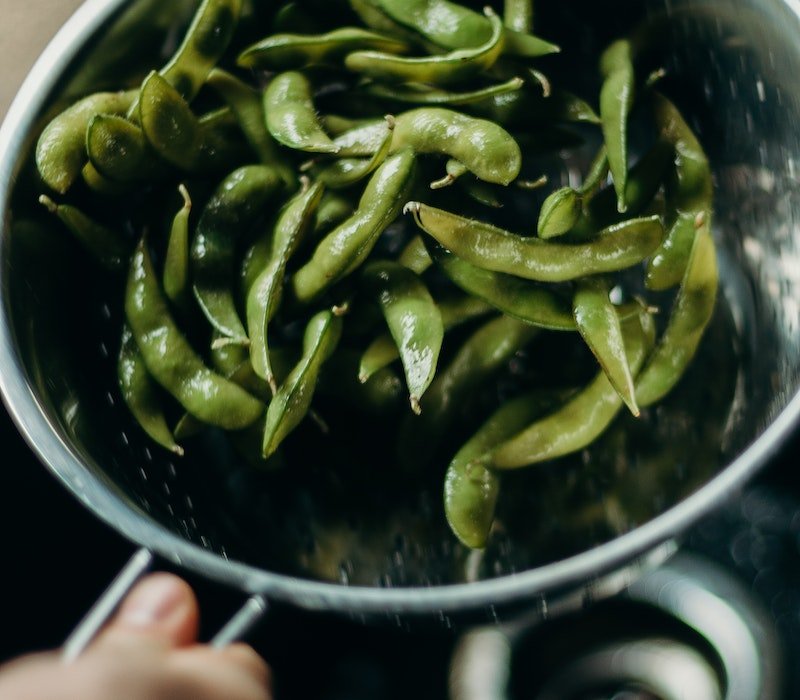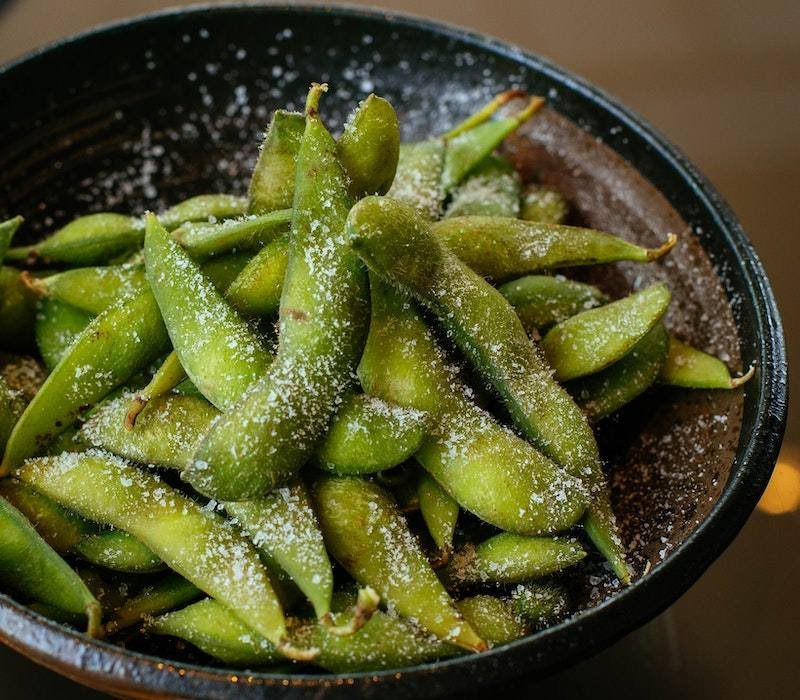Edamame plant, also known as green soybeans, is a totally rad legume that’s super popular in East Asia. These babies grow on a plant that hails from the area and is specially bred to produce tender, immature pods packed with flavor. The plants are short and bushy, maxing out at three feet tall, and they bloom with cute little white flowers in the summer.
Page Contents
Edamame Plant
The pods themselves contain anywhere from two to four soybeans each and are typically in harvest when they’re young and soft. After that, people usually either steam or boil them before enjoying their deliciousness.
Edamame is super tasty and packed with nutrients, plus it’s been a go-to remedy for centuries. In ancient Chinese healing, it was thought to have a chill-out effect on the body and was often used to ease serious maladies like hypertension, inflammation, and even fever.
Plus, folks used to whip up pastes made with the plant’s leaves and roots to soothe all kinds of skin woes, from eczema to pimples. Meanwhile, the Japanese consider edamame as a symbol of vitality and wellness, and they even brew tea using the plant’s young leaves, which are said to have a delicate and delicious flavor and are believed to provide good vibes for the body.

When to Plant Edamame
- Edamame requires a growing season of about 10 to 12 weeks, depending on the variety. (See Recommended Varieties, below, for more information.)
- Direct-sow seeds in the late spring safely after your last spring frost, when the soil is workable and warmed to at least 55°F (13°C). Air temperatures should have reached at least 60°F (16°C). Don’t rush it. Planting in cold wet soil can cause soybean seeds to rot
- Stagger sowing times; each plant’s pods handily mature all at the same time. For a second harvest, plant again about 10 days later
How to Plant Edamame
- Sow seeds ¼ to ½ of an inch deep, 2 to 4 inches apart, in rows 2 feet apart
- Germination takes 1 to 2 weeks
Edamame Plant Nutritons
People are especially into edamame because it’s legit full of all the good stuff our bodies need. Like, we’re talking protein, fiber, and a ton of vitamins and minerals. If you cook up a cup of these green beans, you’ll get around 18 grams of protein and 8 grams of fiber.
Plus, edamame is a total superfood when it comes to nutrients – it’s full of iron, calcium, and vitamin C. So if you’re skipping the meat and dairy and looking for a rad plant-based option, definitely give edamame a try!
One major perk of edamame is that it’s a breeze to cultivate. The plants are tough as nails and can flourish in just about any type of dirt, though they do crave a ton of warmth and sunshine during the growing season. Whether you’re an urban gardener or a bona fide farmer, you can grow edamame on your property with ease.
Edamame Plant Benefits
In addition to its health benefits, edamame can serve a variety of purposes. In Japan, the plant is commonly used for erosion control and to improve soil quality. Its stems and foliage can also be used to feed livestock or create natural fertilizer.
All things considered, edamame is a versatile and nutritious crop that offers heaps of advantages. Its emerald pods are a beloved delicacy in East Asian cuisine, boasting high levels of protein and fiber to help supplement a plant-based diet. If you’re looking to add some eco-friendliness to your farm or garden, be sure to consider giving edamame a try.

Edamame is known for being eco-friendly. This little legume is a soil superhero that can reduce the need for fake fertilizers by fixing nitrogen. Plus, it’s harvested young and requires less water and energy than normal soybeans. When compared to other soybeans, edamame is a better crop for the environment.
You can also try this recipe to Fire up Your Taste Buds. You should also try The Best Edamame Snack and The Best Edamame For Salads.
Edamame Plant Popularity
In the past few years, edamame has become pretty popular all over the place. You can find it at most grocery stores and restaurants across the globe. It’s used as an ingredient in salads, stir-fries, and sushi, and it’s a hit as a snack by itself.
Lately, edamame has become the talk of the town for plant-based eaters and flexitarians looking for a meaty substitute. You can make edamame everything from burgers, sausages, and meatballs to chili, without compromising on protein. This soybean is the King of Versatility!
Edamame is like that chameleon friend who can fit into any group. You can boil or steam it for a quick snack, or sprinkle it into soups, stews, and stir-fries for extra nutrients. If you’re feeling extra funky, mash it up and use it as a spread, or blend it into a smoothie to fulfill your protein needs.
How to Store Edamame
- Store fresh edamame in an airtight container or plastic bag in the refrigerator for up to 1 week. Use as soon as possible
- To freeze edamame pods or shelled beans, blanch them, plunge them in ice water, and then drain. Store in an airtight bag or container in the freezer
- Store dried beans in an airtight container in a dark, cool, dry location
Edamame Plant Gluten Free
Edamame is so well-loved that you’ll find edamame noodles in health stores and online shops. They’re a great gluten-free option if you’re looking for a pasta substitute.
One possible prob with edamame is that it has compounds called phytoestrogens, which can act like estrogen in the body. Although scientists still aren’t sure about the actual health effects of phytoestrogens, some folks might want to cut back on the edamame if they’re worried it could mess with their hormones.
But all in all, edamame is a healthy and eco-friendly crop that’s worth considering. If you’re keen on growing your own edamame or just fancy a tasty and wholesome bite, there are loads of good reasons to give this chameleon-like legume a whirl.
FAQs
Edamame is a low-maintenance plant that requires few basic care techniques. Keep the soil slightly acidic. Edamame grows best in soil pH 6.0. Use compost to maintain rich soil full of nutrients.
Approximately 12 weeks after sowing, the soybeans are ready for harvest in late summer or fall. When the edamame pods turn green and you can see the shape of the beans inside, pick them. Peel the beans from the pods before cooking, or cook the entire pod and then squeeze out the beans.
Researchers at Washington State University found the first written record of edamame in China around 200 BC. The beans were apparently in use for medicinal purposes. It is believed that the Chinese introduced edamame to Japan, where it remains very popular as a vegetable today.
Conclusion
In simpler terms, edamame is a totally awesome and healthy plant that’s the reason for its appreciation for its culinary and medicinal perks for centuries. Thanks to its rad protein and nutrient composition, it’s perfect for throwing into all kinds of dishes like salads, stir-fries, smoothies, and dips.
On top of that, it’s eco-friendly and can cut down on the need for fake fertilizers and save water. Some people might worry about phytoestrogens, but edamame actually helps lower cholesterol and blood pressure while reducing inflammation. With more and more people getting on board, it’s easy to find and enjoy.
If you’re curious about edamame, there are plenty of reasons to give it a try. Its legit history and versatility make it a real treasure.






